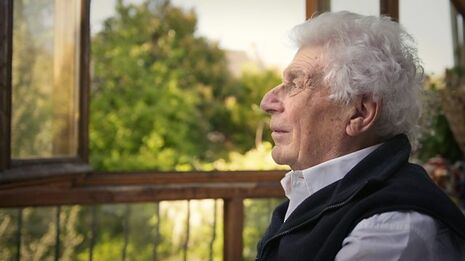TV Round-Up: John Berger: The Art of Looking
Toby Salisbury takes this BBC documentary as an opportunity to reflect on the revered critic’s life, but finds a hagiography in its wake

Many of the artists that the esteemed writer and critic John Berger commented on reached the height of their fame after their deaths. Writers, on the other hand, tend to reach this nadir in their own lifetimes. There are of course exceptions to this rule, as there are with any other (the John Williams phenomenon springs to mind), but in general the art of writing seems to be so entrenched in the contemporary that the reputations of its exponents tend to be solidified while they are still writing.
“To feel the full force of Berger as the troubadour he was, one must turn to his words that survive in print”
This manifests itself most obviously in the hounding attempts made by institutions like the Harry Ransom Center in Texas, an archive which pays eye- (or mouth-) watering sums to writers for their papers and original manuscripts. Ian McEwan’s papers were bought for a rumoured $2 million. They are now in the company of Beckett, Joyce, Márquez and many, many more. Berger’s papers were donated to the British Library in 2009. The price? A hand with harvesting the hay when the Library’s representative came to collect the hundred or so boxes from Berger’s remote Alpine home.
Berger died on 2 January 2017. His final years saw a renewed prominence of his work as those who had been influenced by him since the breakout BBC series Ways of Seeing in 1972 sought to celebrate him before old age claimed him (he died aged 90). New collections of his writing and re-issues of his books were released. These were promoted by fans who themselves have gone on to generate literary clout, such as the author Ali Smith. The actress Tilda Swinton presented The Seasons in Quincy, a short series of films on Berger’s life and influences, as well as the friendship he shared with Swinton. John Berger: The Art of Looking, produced and presented in German (available on BBC iPlayer with English subtitles), is an attempt to portray a man whose career was at once visible and remote.
“This documentary makes for indulgent watching. Yet it is lighter than the subject matter which Berger often dealt with in his writing”
For most of his life, Berger aimed to be a storyteller in the mould of the German intellectual Walter Benjamin. Through his many and varied writing projects – he wrote novels, essays, criticism, and poetry – he achieved this. The story he told was inherently Marxist. Famously, he donated half the prize-money awarded for his novel G to the Black Panther movement as the money was given by Booker, a company which is famous nowadays for its sponsorship of a literary prize but once contributed to the slave trade. What is less well known, and what is perhaps more immediately prescient today, is what he did with the other half. Berger took this money and used it to document the lives of poor migrant workers in Europe, a collaborative effort with photographer Jean Mohr. In The Art of Looking, Berger tells us that the book which resulted from this project, A Seventh Man, is the work of which he is most proud.
The Art of Looking is biography that sometimes borders on hagiography. It consists of insightful interviews with Berger and his children, as well as a great number of collaborators, all of whom have clearly been inspired by Berger. His motives and the origins of his work are explained alongside stunning shots of the mountains where Berger has been living “with the peasants” since the seventies. This documentary makes for indulgent watching. Yet it is lighter than the subject matter which Berger often dealt with in his writing. There is a strong message in this writing and, understandably, this documentary doesn’t quite capture it. To feel the full force of Berger as the troubadour he was, one must turn to the words that survive him in print
 News / Night Climbers call for Cambridge to cut ties with Israel in new stunt15 April 2024
News / Night Climbers call for Cambridge to cut ties with Israel in new stunt15 April 2024 News / Police to stop searching for stolen Fitzwilliam jade17 April 2024
News / Police to stop searching for stolen Fitzwilliam jade17 April 2024 News / Cambridge University cancer hospital opposed by environmental agency12 April 2024
News / Cambridge University cancer hospital opposed by environmental agency12 April 2024 Interviews / In conversation with Dorothy Byrne1 March 2024
Interviews / In conversation with Dorothy Byrne1 March 2024 Interviews / ‘It fills you with a sense of awe’: the year abroad experience17 April 2024
Interviews / ‘It fills you with a sense of awe’: the year abroad experience17 April 2024


